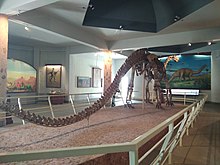ADS 16402
ADS 16402| 관측 데이터 Epoch J2000.0 이쿼녹스 J2000.0 | |
|---|---|
| 별자리 | 라케르타[1] |
| ADS 16402 A | |
| 우측 상승 | 22h 57m 45.9211s[2] |
| 탈위임 | +38° 40′ 27.198″[2] |
| 겉보기 크기(V) | +10.0[3] |
| ADS 16402 B(HAT-P-1) | |
| 우측 상승 | 22h 57m 46.8443s[2] |
| 탈위임 | +38° 40′ 30.355″[2] |
| 겉보기 크기(V) | +10.4[3] |
| 특성. | |
| ADS 16402 A | |
| 스펙트럼형 | F8[3]/G0V[4] |
| 겉보기 크기(J) | 8.670±0.021[5] |
| 겉보기 크기(H) | 8.467±0.044[5] |
| 겉보기 크기(K) | 8.405±0.020[5] |
| ADS 16402 B(HAT-P-1) | |
| 스펙트럼형 | F8[3]/G0V[4] |
| 겉보기 크기(J) | 9.156±0.026[5] |
| 겉보기 크기(H) | 8.923±0.030[5] |
| 겉보기 크기(K) | 8.858±0.018[5] |
| 아스트로메트리 | |
| ADS 16402 A | |
| 방사 속도(Rv) | -3.43 ± 0.32km[4]/s |
| 적정운동(μ) | RA:32.168±0.042mas[2]/yr Dec.:−41.969±0.044[2]mas/yr |
| 시차(시차) | 6.102 ± 0.0387 마스[2] |
| 거리 | 526 ± 3 리 (102 ± 1 pc) |
| 절대치수(MV) | 3.4 ± 0.3[4] |
| ADS 16402 B(HAT-P-1) | |
| 방사 속도(Rv) | -2.94 ± 0.56km[4]/s |
| 적정운동(μ) | RA:32.384±0.041[2]mas/yr Dec.:−41.751±0.044[2]mas/yr |
| 시차(시차) | 6.2615 ± 0.0381 마스[2] |
| 거리 | 521 ± 3 리 (1998.7 ± 1.0 pc) |
| 절대치수(MV) | 3.7 ± 0.3[4] |
| 세부 사항 | |
| ADS 16402 A | |
| 미사 | 1.16 ± 0.11[4] M☉ |
| 반지름 | 1.123 +0.14 −0.10[4] R☉ |
| 루미도 | 1.82 +0.75 −0.53[4] L☉ |
| 표면 중력(log g) | 4.36 ± 0.03[6] cgs |
| 온도 | 6251 ± 17K[6] |
| 금속성 [Fe/H] | 0.19 ± 0.014[6] 덱스 |
| 회전 속도(v sin i) | 7.1 ± 0.3[4] km/s |
| 나이 | 1.9 ± 0.6[7] Gyr |
| ADS 16402 B(HAT-P-1) | |
| 미사 | 1.151 +0.052 −0.051[8] M☉ |
| 반지름 | 1.174 +0.026 −0.027[8] R☉ |
| 루미도 | 1.585 +0.099 −0.094[8] L☉ |
| 표면 중력(log g) | 4.43 ± 0.02[6] cgs |
| 온도 | 6049 ± 8K[6] |
| 금속성 [Fe/H] | 0.127 ± 0.007[6] 덱스 |
| 회전 속도(v sin i) | 2.2 ± 0.2[4] km/s |
| 나이 | 1.9 ± 0.6[7] Gyr |
| 위치(ADS 16402 A와 상대적) | |
| 각도 거리 | 11.26 ± 0.03″ [9] |
| 기타 지정 | |
| ADS 16402 A: BD+37 4734p, PPM 88381[3] | |
| ADS 16402 B: HAT-P-1, BD+37° 4734s, PPM 88382[3] | |
| 데이터베이스 참조 | |
| 심바드 | ADS 16402 |
| ADS 16402 A | |
| HAT-P-1 | |
ADS 16402는 2진수 항성계로, 약 525광년 떨어진 라케르타 별자리에 위치한 태양과 유사한 별 두 개로 구성되어 있다.1831년 존 허셜에 의해 처음으로 2진 별로 식별되었다.[4]두 별은 11.26 아크로 분리되어 ADS 16402의 거리에서 약 1500 천문 단위의 예상 분리로 이어진다.항성계는 19억 ± 06억 년으로 추정된다.[7]2차 항성 ADS 16402 B도 HAT-P-1로 지정된다.
행성계
2006년 9월 14일 HATNet Project는 첫 번째 외계 행성 발견 HAT-P-1b를 발표했는데, 이차 항성 ADS 16402B 주위의 궤도에 있는 뜨거운 목성형 가스 거성이다.HATNet Project에서 사용하는 지정 방식에 따라 2차 항성은 HAT-P-1로 알려져 있으며, 행성 자체가 HAT-P-1b를 지정하였다.[4][10]
| 동반자 (별에서 순서대로) | 미사 | 세미마조르 축 (AU) | 궤도 주기 (일) | 편심성 | 기울기 | 반지름 |
|---|---|---|---|---|---|---|
| b | 0.529 ± 0.020MJ | 0.05561 ± 0.00083 | 4.4652968 ± 0.0000018 | 0 | 85.634 ± 0.056° | 1.319 ± 0.019 RJ |
참고 항목
- HATNet 프로젝트 또는 HAT
참조
- ^ Roman, Nancy G. (1987). "Identification of a Constellation From a Position". Publications of the Astronomical Society of the Pacific. 99 (617): 695–699. Bibcode:1987PASP...99..695R. doi:10.1086/132034. Vizier 쿼리 양식
- ^ a b c d e f g h i j Brown, A. G. A.; et al. (Gaia collaboration) (August 2018). "Gaia Data Release 2: Summary of the contents and survey properties". Astronomy & Astrophysics. 616. A1. arXiv:1804.09365. Bibcode:2018A&A...616A...1G. doi:10.1051/0004-6361/201833051. ADS 16402 A의 Gaia Data Release 2 카탈로그 항목 ADS 16402 B에 대한 Gaia Data Release 2 카탈로그 항목
- ^ a b c d e f g "ADS16402". SIMBAD. Centre de données astronomiques de Strasbourg. Retrieved 2009-05-10.
- ^ a b c d e f g h i j k l m Bakos, G. Á.; et al. (2007). "HAT-P-1b: A Large-Radius, Low-Density Exoplanet Transiting One Member of a Stellar Binary". The Astrophysical Journal. 656 (1): 552–559. arXiv:astro-ph/0609369. Bibcode:2007ApJ...656..552B. doi:10.1086/509874.
- ^ a b c d e f Skrutskie, Michael F.; et al. (1 February 2006). "The Two Micron All Sky Survey (2MASS)". The Astronomical Journal. 131: 1163–1183. doi:10.1086/498708. ISSN 0004-6256. A에 대한 Vizier 카탈로그 항목 B에 대한 Vizier 카탈로그 항목
- ^ a b c d e f Liu, F.; et al. (2014). "A high-precision chemical abundance analysis of the HAT-P-1 stellar binary: constraints on planet formation". Monthly Notices of the Royal Astronomical Society. 442 (1): L51–L55. arXiv:1404.2112. Bibcode:2014MNRAS.442L..51L. doi:10.1093/mnrasl/slu055.
- ^ a b c Bonfanti, A.; et al. (2015). "Revising the ages of planet-hosting stars". Astronomy and Astrophysics. 575. A18. arXiv:1411.4302. Bibcode:2015A&A...575A..18B. doi:10.1051/0004-6361/201424951.
- ^ a b c d Nikolov, N.; et al. (2014). "Hubble Space Telescope hot Jupiter transmission spectral survey: a detection of Na and strong optical absorption in HAT-P-1b". Monthly Notices of the Royal Astronomical Society. 437 (1): 46–66. arXiv:1310.0083. Bibcode:2014MNRAS.437...46N. doi:10.1093/mnras/stt1859.
- ^ Faedi, F.; et al. (2013). "Lucky imaging of transiting planet host stars with LuckyCam". Monthly Notices of the Royal Astronomical Society. 433 (3): 2097–2106. arXiv:1305.3795. Bibcode:2013MNRAS.433.2097F. doi:10.1093/mnras/stt885.
- ^ Aguilar, David A.; Pulliam, Christine (September 14, 2006). "Strange New Planet Baffles Astronomers" (Press release). Cambridge, Massachusetts: Harvard–Smithsonian Center for Astrophysics. Retrieved November 18, 2016.
- ^ Turner, Jake D.; et al. (2016). "Ground-based near-UV observations of 15 transiting exoplanets: constraints on their atmospheres and no evidence for asymmetrical transits". Monthly Notices of the Royal Astronomical Society. 459 (1): 789–819. arXiv:1603.02587. Bibcode:2016MNRAS.459..789T. doi:10.1093/mnras/stw574.
외부 링크
- "Planet HAT-P-1 b". The Extrasolar Planets Encyclopaedia. Retrieved 2018-05-06.


